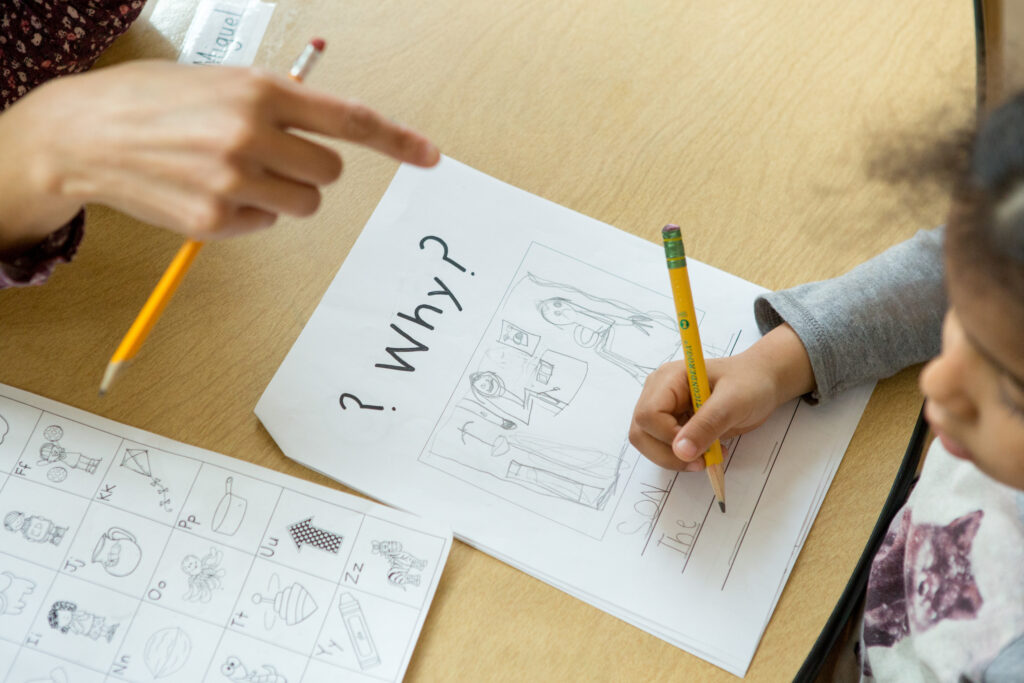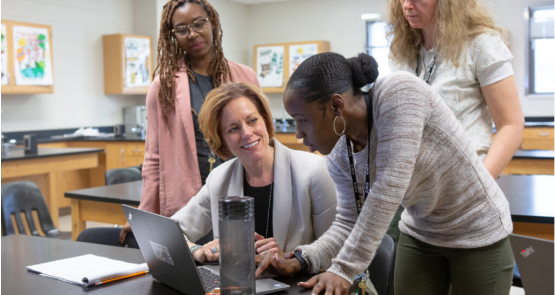The State of Critical Thinking 2020
November 2020
Introduction
In 2018, the Reboot Foundation released a first-of-its-kind survey looking at the public’s attitudes toward critical thinking and critical thinking education. The report found that critical thinking skills are highly valued, but not taught or practiced as much as might be hoped for in schools or in public life.
The survey suggested that, despite recognizing the importance of critical thinking, when it came to critical thinking practices—like seeking out multiple sources of information and engaging others with opposing views—many people’s habits were lacking. Significant numbers of respondents reported relying on inadequate sources of information, making decisions without doing enough research, and avoiding those with conflicting viewpoints.
In late 2019, the Foundation conducted a follow up survey in order to see how the landscape may have shifted. Without question, the stakes surrounding better reasoning have increased. The COVID-19 pandemic requires deeper interpretive and analytical skills. For instance, when it comes to news about a possible vaccine, people need to assess how it was developed in order to judge whether it will actually work.
Misinformation, from both foreign and domestic sources, continues to proliferate online and, perhaps most disturbingly, surrounding the COVID-19 health crisis. Meanwhile, political polarization has deepened and become more personal. At the same time, there’s both a growing awareness and divide over issues of racism and inequality. If that wasn’t enough, changes to the journalism industry have weakened local civic life and incentivized clickbait, and sensationalized and siloed content.

Part of the problem is that much of our public discourse takes place online, where cognitive biases can become amplified, and where groupthink and filter bubbles proliferate. Meanwhile, face-to-face conversations—which can dissolve misunderstandings and help us recognize the shared humanity of those we disagree with—go missing.
Critical thinking is, of course, not a cure-all, but a lack of critical thinking skills across the population exacerbates all these problems. More than ever, we need skills and practice in managing our emotions, stepping back from quick-trigger evaluations and decisions, and over-relying on biased or false sources of information.
To keep apprised of the public’s view of critical thinking, the Reboot Foundation conducted its second annual survey in late 2019. Unfortunately, the COVID-19 pandemic forced a delay in the release of the results. Nevertheless, this most recent survey dug deeper than our 2018 poll, and looked especially into how the public understands the state of critical thinking education. For the first time, our team also surveyed teachers on their views on teaching critical thinking.
General Findings
Support for critical thinking skills remains high, but there is also clearly skepticism that individuals are getting the help they need to acquire improved reasoning skills.
A very high majority of people surveyed (94 percent) believe that critical thinking is “extremely” or “very important.” But they generally (86 percent) find those skills lacking in the public at large. Indeed, 60 percent of the respondents reported not having studied critical thinking in school. And only about 55 percent reported that their critical thinking skills had improved since high school, with almost a quarter reporting that those skills had deteriorated.
There is also broad support among the public and teachers for critical thinking education, both at the K-12 and collegiate levels. For example, 90 percent think courses covering critical thinking should be required in K-12.
Many respondents (43 percent) also encouragingly identified early childhood as the best age to develop critical thinking skills. This was a big increase from our previous survey (just 20 percent) and is consistent with the general consensus among social scientists and psychologists.
There are worrisome trends—and promising signs—in critical thinking habits and daily practices. In particular, individuals still don’t do enough to engage people with whom they disagree.
Given the deficits in critical thinking acquisition during school, we would hope that respondents’ critical thinking skills continued to improve after they’ve left school. But only about 55 percent reported that their critical thinking skills had improved since high school, with almost a quarter reporting that their skills had actually deteriorated since then.
Questions about respondents’ critical thinking habits brought out some encouraging information. People reported using more than one source of information when making a decision at a high rate (around 77 percent said they did this “always” or “often”) and giving reasons for their opinions (85 percent). These numbers were, in general, higher than in our previous survey (see “Comparing Survey Results” below).
In other areas of critical thinking, responses were more mixed. Almost half of respondents, for example, reported only “sometimes,” “rarely,” or “never” seeking out people with different opinions to engage in discussion. Many also reported only “sometimes,” “rarely,” or “never” planning where (35 percent) or how (36 percent) to get information on a given topic.

These factors are tied closely together. Critical thinking skills have been challenged and devalued at many different levels of society. There is, therefore, no simple fix. Simply cleansing the internet of misinformation, for example, would not suddenly make us better thinkers. Improving critical thinking across society will take a many-pronged effort.
Comparing Survey Results
Several interesting details emerged in the comparison of results from this survey to our 2018 poll. First, a word of caution: there were some demographic differences in the respondents between the two surveys. This survey skewed a bit older: the average age was 47, as opposed to 36.5. In addition, more females responded this time: 57 percent versus 46 percent.
That said, there was a great deal of consistency between the surveys on participants’ general views of critical thinking. Belief in the importance of critical thinking remains high (94 percent versus 96 percent), as does belief that these skills are generally lacking in society at large. Blame, moreover, was spread to many of the same culprits. Slightly more participants blamed technology this time (29 versus 27 percent), while slightly fewer blamed the education system (22 versus 26 percent).
Respondents were also generally agreed on the importance of teaching critical thinking at all levels. Ninety-five percent thought critical thinking courses should be required at the K-12 level (slightly up from 92 percent); and 91 percent thought they should be required in college (slightly up from 90 percent). (These questions were framed slightly differently from year to year, which could have contributed to the small increases.)
One significant change came over the question of when it is appropriate to start developing critical thinking skills. In our first survey, less than 20 percent of respondents said that early childhood was the ideal time to develop critical thinking skills. This time, 43 percent of respondents did so. As discussed below, this is an encouraging development since research indicates that children become capable of learning how to think critically at a young age.
In one potentially discouraging difference between the two surveys, our most recent survey saw more respondents indicate that they did less critical thinking since high school (18 percent versus just 4 percent). But similar numbers of respondents indicated their critical thinking skills had deteriorated since high school (23 percent versus 21 percent).
Finally, encouraging points of comparison emerged in responses to questions about particular critical thinking activities. Our most recent survey saw a slight uptick in the number of respondents reporting engagement in activities like collaborating with others, planning on where to get information, seeking out the opinions of those they disagree with, keeping an open mind, and verifying information. (See Appendix 1: Data Tables.)
These results could reflect genuine differences from 2018, in either actual activity or respondents’ sense of the importance of these activities. But demographic differences in age and gender could also be responsible.
There is reason to believe, however, that demographic differences are not the main factor, since there is no evident correlation between gender and responses in either survey. Meanwhile, in our most recent survey older respondents reported doing these activities less frequently. Since this survey skewed older, it might have been anticipated that respondents would report doing these activities less. But the opposite is the case.
Findings From Teacher Survey
Teachers generally agree with general survey respondents about the importance of critical thinking. Ninety-four percent regard critical thinking as “extremely” or “very important.”
Teachers, like general survey participants, also share concerns that young people aren’t acquiring the critical thinking skills they need. They worry, in particular, about the impact of technology on their students’ critical thinking skills. In response to a question about how their school’s administration can help them teach critical thinking education more effectively, some teachers said updated technology (along with new textbooks and other materials) would help, but others thought laptops, tablets, and smartphones were inhibiting students’ critical thinking development.

This is an important point to clarify if we are to better integrate critical thinking into K-12 education. Research strongly suggests that critical thinking skills are best acquired in combination with basic facts in a particular subject area. The idea that critical thinking is a skill that can be effectively taught in isolation from basic facts is mistaken.
Another common misconception reflected in the teacher survey involves critical thinking and achievement. Although a majority of teachers (52 percent) thought all students benefited from critical thinking instruction, a significant percentage (35) said it primarily benefited high-ability students.
At Reboot, we believe that all students are capable of critical thinking and will benefit from critical thinking instruction. Critical thinking is, after all, just a refinement of everyday thinking, decision-making, and problem-solving. These are skills all students must have. The key is instilling in our young people both the habits and subject-area knowledge needed to facilitate the improvement and refinement of these skills.
Teachers need more support when it comes to critical thinking instruction. In the survey, educators repeatedly mentioned a lack of resources and updated professional development. In response to a question about how administrators could help teachers teach critical thinking more effectively, one teacher asked for “better tools and materials for teaching us how to teach these things.”
Others wanted more training, asking directly for additional support in terms of resources and professional training. One educator put it bluntly: “Provide extra professional development to give resources and training on how to do this in multiple disciplines.”
Media literacy is still not being taught as widely as it should be. Forty-four percent of teachers reported that media literacy courses are not offered at their schools, with just 31 percent reporting required media literacy courses.
This is despite the fact that teachers, in their open responses, recognized the importance of media literacy, with some suggesting it should be a graduation requirement. Many organizations and some governments, notably Finland’s, have recognized the media literacy deficit and taken action to address it, but the U.S. education system has been slow to act.
Background
Thinking skills have been valuable in all places and at all times. But with the recent upheavals in communication, information, and media, particularly around the COVID-19 crisis, such skills are perhaps more important than ever.
Part of the issue is that the production of information has been democratized—no longer vetted by gatekeepers but generated by anyone who has an internet connection and something to say. This has undoubtedly had positive effects, as events and voices come to light that might have previously not emerged. The recording of George Floyd’s killing is one such example. But, at the same time, finding and verifying good information has become much more difficult.
Technological changes have also put financial pressures on so-called “legacy media” like newspapers and television stations, leading to sometimes precipitous drops in quality, less rigorous fact-checking (in the original sense of the term), and the blending of news reports and opinion pieces. The success of internet articles and videos is too often measured by clicks instead of quality. A stable business model for high-quality public interest journalism remains lacking. And, as biased information and propaganda fills gaps left by shrinking newsrooms, polarization worsens.(1)
Traditional and social media both play into our biases and needs for in-group approval. Online platforms have proven ideal venues for misinformation and manipulation. And distractions abound, damaging attention spans and the quality of debate.
Many hold this digital upheaval at least partially responsible for recent political upheavals around the world. Our media consumption habits increasingly reinforce biases and previously held beliefs, and expose us to only the worst and most inflammatory views from the other side. Demagogues and the simple, emotion-driven ideas they advance thrive in this environment of confusion, isolation, and sensationalism.

It’s not only our public discourse that suffers. Some studies have suggested that digital media may be partially responsible for rising rates of depression and other mood disorders among the young.(2)
Coping with this fast-paced, distraction-filled world in a healthy and productive manner requires better thinking and better habits of mind, but the online world itself tends to encourage the opposite. This is not to suggest our collective thinking skills were pristine before the internet came along, only that the internet presents challenges to our thinking that we have not seen before and have not yet proven able to meet.
There are some positive signs, with more attention and resources being devoted to neglected areas of education like civics and media literacy; organizations trying to address internet-fueled polarization and extremism; and online tools being developed to counter fake news and flawed information.
But we also need to support the development of more general reasoning skills and habits: in other words, “critical thinking.”
Critical thinking has long been a staple of K-12 and college education, theoretically, at least, if not always in practice. But the concept can easily appear vague and merely rhetorical without definite ideas and practices attached to it.
When, for example, is the best age to teach critical thinking? What activities are appropriate? Should basic knowledge be acquired at the same time as critical thinking skills, or separately? Some of these questions remain difficult to answer, but research and practice have gone far in addressing others.
Part of the goal of our survey was to compare general attitudes about critical thinking education—both in the teaching profession and the general public—to what the best and most recent research suggests. If there is to be progress in the development of critical thinking skills across society, it requires not just learning how best to teach critical thinking but diffusing that knowledge widely, especially to parents and educators.
Methods
The surveys were distributed through Amazon’s MTurk Prime service.
For the general survey, respondents answered a series of questions about critical thinking, followed by a section that asked respondents to estimate how often they do certain things, such as consult more than one source when searching for information. The questions in the “personal habit” section appeared in a randomized order to reduce question ordering effects. Demographic questions appeared at the end of the survey.
For the teacher survey, respondents were all part of a teacher panel created by MTurk Prime. They also answered a series of questions on critical thinking, especially focused on the role of critical thinking in their classrooms. After that, respondents answered a series of questions about how they teach—these questions were also randomized to reduce question ordering effects. Finally, we asked questions related to the role of media literacy in their classrooms.

To maintain consistency with the prior survey and to explore relationships across time, many of the questions remained the same from 2018. In some cases, following best practices in questionnaire design, we revamped questions to improve clarity and increase the validity and reliability of the responses.
For all surveys, only completed responses coming from IP addresses located in the U.S. were analyzed. 1152 respondents completed the general survey; 499 teachers completed the teacher survey.
The complete set of questions for each survey is available upon request
Detailed Findings and Discussion
As summarized above, the survey produced a number of noteworthy findings. One central theme that emerged was a general pessimism about the state of critical thinking and uncertainty about how to improve it. That is, despite the near-universal acknowledgment of the importance of critical thinking, respondents generally think society at large is doing a bad job of cultivating critical thinking skills. Respondents were, moreover, divided about what needs to be done.
Almost all the people surveyed (94 percent) believe that critical thinking is “extremely” or “very important.” But they generally (86 percent) find those skills lacking in the public at large. These numbers don’t come as a huge surprise—and they echo the 2018 results—but they do suggest broad public support for initiatives that advance critical thinking skills, both inside and outside of schools.
Respondents also reported deficits in their own critical thinking training and practices. They tended not to think critical thinking had been a point of emphasis in their own education, with a substantial majority of over 63 percent reporting that they had not studied critical thinking in school. Around 20 percent said their schools had provided no background in critical thinking at all, and another 20 percent said the background in critical thinking they gained from school was only slight.
There were significant differences among age groups in these self-reports. Around half of respondents in both the 0-19 and 20-39 age groups reported having studied critical thinking in school. Those numbers dwindled among older groups, bottoming out at 11 percent among 80 to 100-year-olds.
This result is likely in part due to the increased popularity of the phrase “critical thinking”: prior generations may have spent a substantial amount of time on reasoning skills without it coming under the same vocabulary. The young are also closer to school-age, of course, so may simply have sharper memories of critical thinking activities. But the differences in responses might also reflect genuine differences in education.
In any case it’s clear that, even recently, many—if not most—students come out of school feeling as if they have not learned how to think critically, despite the fact that there is broad consensus on the importance of these skills. Only around 25 percent of respondents reported receiving an “extremely” or “very” strong background in critical thinking from their schools.
There are a number of potential causes—technology, social norms, misguided educational priorities—but perhaps the most salient is that, as cognitive scientist Tim van Gelder puts it, “critical thinking is hard.” As van Gelder emphasizes, we don’t naturally think reasonably and rationally; instead we tend to rely on narrative, emotion, and intuition—what feels right.(3) Teaching students to think critically requires much more guidance and practice, throughout the curriculum, than is currently being provided.
There is broad support among the public and among teachers for critical thinking education, both at the K-12 and collegiate levels.
Around 90 percent of respondents in the general public said that courses covering critical thinking should be required at the K-12 level, while 94 percent of teachers said critical thinking is important.
And schools usually echo this sentiment as well, citing the phrase “critical thinking” frequently in curricula and other materials. But it remains unclear if, in practice, critical thinking is really the priority it’s made out to be rhetorically.
One problem is a tendency to think critical thinking and reasoning are too complex for younger students to tackle. But research has shown that children start reasoning logically at a very young age.(4) Critical thinking through activities like open-ended dialogue, weighing opposing perspectives, and backing up opinions with reasoning can have a positive effect even at the K-5 level. For example, philosophy for kids courses have shown some positive effects on students’ reading and math skills (gains were even more substantial for disadvantaged students).(5)
Our survey respondents generally agreed that critical thinking skills should be taught from an early age. Forty-three percent favored beginning critical thinking instruction during early childhood (another 27 percent favored beginning at ages 6-12). This was more than a twofold increase over the results from 2018’s survey, in which just 20 percent thought it was best to begin instruction in critical thinking before the age of 6. This increase is encouraging since it’s consistent with recent research that understands critical thinking as part of general cognitive development that starts even before children enter school.(6)
Many teachers likewise support critical thinking instruction beginning at a young age. In the open response, for example, one wrote, “Critical thinking should be explicitly taught in earlier grades than late middle school and high school.”

Another wrote: “By the time students get to high school they should have this skill [critical thinking] well tuned. The pressure to meet standards earlier and earlier makes it harder to teach basic skills like critical thinking.”
Many teachers (55 percent) also thought the emphasis on standardized testing has made it more difficult to incorporate critical thinking instruction in the classroom. For example, one wrote, “Standardized testing has created an environment of quantitative results that don’t always represent qualitative gains.”
Moreover, a plurality of teachers (25 percent) believe that state standardized tests do not assess critical thinking skills well at all, while just 13 percent believe they assess critical thinking skills extremely well. Teachers generally (52 percent) believe that their own tests do a better job of measuring critical thinking skills.
The survey also found some worrisome trends—as well as some promising signs—in how people evaluated their own critical thinking skills and daily practices. In particular, individuals don’t do enough to engage people with whom they disagree.
Given the deficits in critical thinking acquisition during school, it might be hoped that respondents’ critical thinking skills continued to improve after they’ve left school. But only about 55 percent reported that their critical thinking skills had improved since high school, with almost a quarter reporting that their skills had actually deteriorated since then.
This is especially alarming because thinking critically, unlike say learning about calculus or the Russian Revolution, is generally thought to be a lifelong endeavour. We are supposed to become better with age and experience. Research into adult education suggests that it’s never too late to make gains in critical thinking. (7)
Questions about respondents’ critical thinking habits brought out more detailed information. Some of these responses were encouraging. People reported using more than one source of information when making a decision at a high rate (around 77 percent said they did this “always” or “often”), giving reason for their opinions (85 percent), supporting their decisions with information (84 percent), and listening to the ideas of those they disagree with (81 percent). Participants generally reported engaging in more critical thinking activities this time than in our initial survey. (See “Comparing Survey Results” above.)

In other areas of critical thinking, responses were more mixed. Almost half of respondents, for example, reported only “sometimes,” “rarely,” or “never” seeking out people with different opinions to engage in discussion. Many also reported only “sometimes,” “rarely,” or “never” planning where (35 percent) or how (36 percent) to get information on a given topic.
It’s difficult to totally identify the drivers of these figures. After all, all humans are prone to overestimating the amount and quality of reasoning we do when we come to decisions, solve problems, or research information. But, at the very least, these numbers indicate that people acknowledge that these various critical thinking habits are admirable goals to shoot for.
At the same time and unsurprisingly, these results suggest a reluctance to engage in the more demanding aspects of critical thinking: difficult or unpleasant tasks like seriously considering the possibility that our opponents might be right or thinking carefully about how to approach information-gathering before we engage in it.
Weaknesses in these areas of critical thinking can be especially easily exploited by emotionalized, oversimplified, and sensationalistic news and rhetoric. If people jump in to information-gathering without even a rough plan or method in mind they’re more likely to get swept up by clickbait or worse.
The current media environment requires a mindful and deliberate approach if it is to be navigated successfully. And one’s own opinions will remain under-nuanced, reactive, and prone to groupthink if they’re influenced by the extreme opinions and caricatures that are often found online and on television instead of by engagement with well-reasoned and well-intentioned perspectives.
Poor media consumption habits can have a distorting effect on our political perceptions, especially. Recent research, for example, has identified wildly inaccurate stereotypes among the general public about the composition of political parties. One study found that “people think that 32% of Democrats are LGBT (versus 6% in reality) and 38% of Republicans earn over $250,000 per year (vs. 2% in reality).”(8) The study also suggested, alarmingly, that “those who pay the most attention to political media may […] also [be] the likeliest to possess the most misinformation about party composition.”(9)
The public is worried about the impact of technology on the acquisition of critical thinking skills. They also blamed deficits in critical thinking on changing societal norms and the education system.
Modern technology was the most cited reason for a lack of critical thinking skills among the general public, with “changing societal norms” coming in a close second. Over 200 respondents also cited the educational system (see chart below).

A number of the teachers also mentioned potential drawbacks of technology in the classroom environment. For example, in the open response portion of the survey, which allowed teachers to voice general concerns, one teacher wrote: “Get rid of the laptops and tablets and bring back pencil and paper because the students aren’t learning anything using technology.” Another said: “Personal Electronic devices need to be banned in schools.”
In our own work at the Reboot Foundation, the research team found evidence of negative correlations between technology use at schools and achievement. For example, an analysis of data from the National Assessment of Education Progress (NAEP) showed that fourth graders using tablets “in all or almost all” classes performed significantly worse (the equivalent of a full grade level) than their peers who didn’t use them.
Another recent study the foundation supported also suggested students benefited from using pencil and paper as opposed to technology to do math homework. The Organization for Economic Cooperation and Development found similar results a few years ago in their international study of 15-year-olds and computer usage.(10)
There is a great deal the field still doesn’t know about the effects of different kinds of technology on different kinds of learning. But a growing stock of research suggests that schools should be cautious about introducing technology into classrooms and the lives of students in general, especially young students.(11)
It would also be a mistake to slip into simple Luddism though. Technology, obviously, provides benefits as well—making education more accessible, reducing costs, helping teachers to fine-tune instruction to student needs, to name a few. During the coronavirus crisis, moreover, educators have had no choice but to rely and hopefully help improve these tools.
Still, too often in the past schools have turned to technology without properly weighing the costs against the benefits, and without determining whether technology is truly needed or effective. A recent RAND Corporation paper, for example, discussed programs “seeking to implement personalized learning” but without “clearly defined evidence-based models to adopt.”(12)
The Reboot survey suggests that members of the public as well as teachers generally share these concerns, both about educational technology specifically and about the general impact of technology on student learning.

While teachers support critical thinking instruction, they are divided about how to teach it, and some educators have beliefs about critical thinking instruction that conflict with established research.
One central question in the research about how to best instill critical thinking skills in students is whether critical thinking should be taught in conjunction with basic facts and knowledge or separated from it.
Teachers were split on this question, with 41 percent thinking students should engage in critical thinking practice while learning basic facts, while 42 percent thought students should learn basic facts first then engage in critical thinking practice. A further 16 percent believe that basic facts and critical thinking should be taught separately. (However, only about 13 percent of teachers surveyed say that content knowledge either doesn’t matter at all or only matters slightly for critical thinking skills.)
The view that knowledge and critical thinking skills can and should be taught separately is mistaken. There is a common view that since information is so widely accessible today, learning basic facts is no longer important. According to this view, it’s only cognitive skills that matter. But the two cannot be so neatly divorced as is often assumed.(13)
Research in cognitive science strongly suggests that critical thinking is not the type of skill that can be divorced from content and applied generically to all kinds of different contexts. As cognitive scientist Daniel T. Willingham argues, “The ability to think critically […] depends on domain knowledge and practice.”(14)
This means students need to practice critical thinking in many different kinds of contexts throughout the curriculum as they acquire the background knowledge needed to reason in a given context. There are of course general skills and habits that can be extrapolated from these various kinds of practice, but it is very unlikely that critical thinking can be taught as a skill divorced from content. “It […] makes no sense,” Willingham writes, “to try to teach critical thinking devoid of factual content.”
This doesn’t necessarily mean standalone critical thinking courses should be rejected. Students can still gain a lot from learning about formal logic, for example, and from learning about metacognition and the best research practices. But these standalone courses or programs should include acquisition of basic factual knowledge as well, and the skills and habits learned in them must be applied and reinforced in other courses and contexts.
Students, moreover, should be reminded that being “critical” is an empty slogan unless they have the requisite factual knowledge to make a cogent argument in a given domain. They need background knowledge to be able to seek out evidence from relevant sources, to develop reliable and nuanced interpretations of information, and to back the arguments they want to make with evidence.

Reboot also asked teachers about which students they thought benefited from critical thinking instruction. A majority (52 percent) thought it benefits all students, but 35 percent said (with the remaining 13 percent thinking it primarily benefits lower-ability students).
The view that critical thinking instruction is only effective for higher achieving students is another common misconception. Everyone is capable of critical thinking, and even, to a certain extent, engages in critical thinking on their own. The key is for students to develop metacognitive habits and subject-area knowledge so that they can apply critical thought in the right contexts and in the right way. Educators should not assume that lower-achieving students will not benefit from critical thinking instruction.
Teachers need more support when it comes to critical thinking instruction, though at least some teacher training and professional development programs do seem to help.
In the survey, educators repeatedly mentioned a lack of resources and updated professional development. In response to a question about how administrators could help teachers teach critical thinking more effectively, one teacher asked for “better tools and materials for teaching us how to teach these things.”
Another said, “Provide opportunities for teachers to collaborate and cross train across subject areas, as well as providing professional development that is not dry or outdated.” Another characteristic comment: “Provide extra professional development to give resources and training on how to do this in multiple disciplines.”
Overall teachers were relatively satisfied that teacher training and professional development programs were helping them teach critical thinking. Forty-six percent said that their teacher training helped them a lot or a great deal, while 50 percent said professional development programs help them a lot or a great deal.
But other teachers reported burdensome administrative tasks and guidelines were getting in the way of teacher autonomy and critical thinking instruction. For example, one teacher wrote, “Earlier in my career I had much more freedom to incorporate instruction of critical thinking into my lessons.”
Media literacy is still not being taught as widely as it should be.
In our survey, teachers rightly recognized that media literacy is closely bound up with critical thinking. One said, “I believe that media literacy goes hand in hand with critical thinking skills and should be a requirement […] especially due to the increase in use of technology among our youth.” Another offered that “media literacy should be a graduation requirement like economics or government.”
But schools, at least judging by teachers’ responses in the survey, have been slow in prioritizing media literacy. More than 44 percent reported that media literacy courses are not offered at their schools, and just around 30 percent reported that media literacy courses are required. That said, the majority of teachers did report teaching typical media literacy skills occasionally in their classes.
For example, over 60 percent said that, in at least one class, they “teach students how to distinguish legitimate from illegitimate sources,” and over two-thirds said they “teach students how to find reliable sources.”(15)
Despite the assumption sometimes made that young people (“digital natives”) must be adept navigators of the internet, recent studies have found that students have trouble evaluating the information they consume online. They have problems recognizing bias and misinformation, distinguishing between advertising and legitimate journalism, and verifying information using credible sources.
Our age is one in which unreliable information proliferates; nefarious interests use the internet to influence public opinion; and social media encourages groupthink, emotional thinking, and pile-on. New skills and training are required to navigate this environment. Our schools must adapt.
This means generating and implementing specific interventions that help students learn to identify markers of misinformation and develop healthy information-gathering habits. The Reboot Foundation’s own research suggests that even quick and immediate interventions can have a positive impact. But it also means instilling students with life-long critical thinking habits and skills which they’ll be able to apply to an ever-changing media landscape.
Conclusion
Despite its importance, which is widely acknowledged by the general public, critical thinking remains a somewhat vague and poorly understood concept. Most people realize that it is of vital importance to individual success and educational attainment, as well as to civic life in a liberal democracy. And most seem to realize that 21st-century challenges and changes make acquiring critical thinking skills of even more urgent importance. But when it comes to instilling them in children and developing them in adults, we are, in many ways, still at square one.
Over the course of the last few decades, K-12 educators have been urged to teach critical thinking, but they have been given conflicting and inconsistent advice on how to do it. There remains a lack of proven resources for them to rely on, a lack of administrative support—and sometimes even a lack of a clear sense of what exactly critical thinking is. Perhaps most importantly, teachers lack the time and freedom within the curriculum to teach these skills.

But there have been a number of insights from cognitive science and other disciplines that suggest a way forward. Perhaps the most important is that critical thinking cannot be understood as a skill on par with learning a musical instrument or a foreign language. It is more complicated than those kinds of skills, involving cognitive development in a number of different areas and integrated with general knowledge learned in other subject areas. Critical thinking courses and interventions that ignore this basic fact may produce some gains, but they will not give students the tools to develop their thinking more broadly and apply critical thought to the world outside of school.
College and continuing education deserve attention too. It should be considered a red flag that only 55 percent of respondents didn’t think they’d made any strides in critical thinking skills since high school. Colleges have long been moving away from a traditional liberal arts curriculum. The critical thinking skills acquired across those disciplines have likely suffered as a result.
In recent years, we’ve seen smart people who should know better time and again exhibit poor judgment online. It is important to remind each other of the importance of stepping back, managing emotions, engaging with others charitably, and seriously considering the possibility that we are wrong. This is especially important when we are searching for information online, an environment that can easily discourage these intellectual virtues. Ramping up media literacy—for both adults and young people—will be a vital part of the solution.
But, ultimately, critical thinking, which touches on so many different aspects of personal and civic life, must be fostered in a multitude of different ways and different domains. A secure, prosperous, and civil future may, quite literally, depend on it.
Appendix 1: Data Tables
[table id=72 /]
[table id=73 /]
[table id=74/]
[table id=75 /]
[table id=76 /]
(1)* W Gandour, R. (2016) A new information environment: How digital fragmentation is shaping the way we produce and consume news. Knight Center for Journalism in the Americas. https://knightcenter.utexas.edu/books/NewInfoEnvironmentEnglishLink.pdf
(2)* Twenge, J. M., Cooper, A. B., Joiner, T. E., Duffy, M. E., & Binau, S. G. (2019). Age, period, and cohort trends in mood disorder indicators and suicide-related outcomes in a nationally representative dataset, 2005–2017. Journal of Abnormal Psychology.
(3)* Gelder, T. V. (2005). Teaching critical thinking: Some lessons from cognitive science. College Teaching, 53(1), 41-48.
(4)* Gelman, S. A., & Markman, E. M. (1986). Categories and induction in young children. Cognition, 23, 183-209.
(5)* Gorard, S., Siddiqui, N., & See, B. H. (2015). Philosophy for Children: Evaluation report and executive summary. Education Endowment Foundation. https://educationendowmentfoundation.org.uk/public/files/ Projects/Evaluation_Reports/EEF_Project_Report_PhilosophyForChildren.pdf
(6)* Kuhn, D. (1999). A developmental model of critical thinking. Educational researcher, 28(2), 16-46.
(7)* Dwyer, C. P., & Walsh, A. (2019). An exploratory quantitative case study of critical thinking development through adult distance learning. Educational Technology Research and Development, 1-19.
(8)* Ahler, D. J., & Sood, G. (2018). The parties in our heads: Misperceptions about party composition and their consequences. The Journal of Politics, 80(3), 964-981. 964.
(9)* Ibid., 965.
(10)* Organization for Economic Cooperation and Development. (2015). Students, computers and learning: Making the connection. https://doi.org/10.1787/9789264239555-en
(11)* Madigan, S., Browne, D., Racine, N., Mori, C., & Tough, S. (2019). Association between screen time and children’s performance on a developmental screening test. JAMA pediatrics, 173(3), 244-250.
(12)* Pane, J. F. (2018). Strategies for implementing personalized learning while evidence and resources are underdeveloped. RAND Corporation. https://www.rand.org/pubs/perspectives/PE314.html
(13)* Wexler, N. (2019). The knowledge gap: The hidden cause of America’s broken education system–and how to fix it. Avery.
(14)* Willingham, D. T. (2007). Critical thinking: Why is it so hard to teach? American Federation of Teachers (Summer 2007) 8-19.
(15)* Wineburg, S., McGrew, S., Breakstone, J., & Ortega, T. (2016). Evaluating information: The cornerstone of civic online reasoning. Stanford Digital Repository, 8, 2018.




